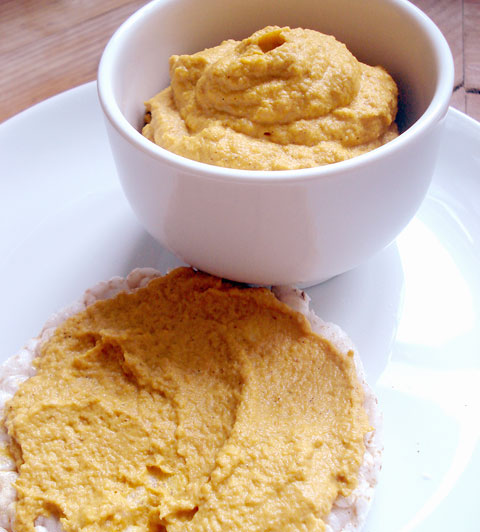
I do love carrots. They are full of nutrients and fiber, inexpensive, available year around, and durable. And their bright orange color (or other colors, if you delve into the exotic varieties) add instant cheer to any dish or bento box. So when I saw that my favorite vegan author Yumiko Kano was coming out with a new book of just carrot recipes, I reserved it in advance without a second thought.
This is a recipe adapted from that book. It's a soft, light carrot spread or paste that is sweet, salty and a bit spicy. It has tahini (sesame seed paste) in it, which adds richness as well as protein. The spiciness comes from cumin and red chili pepper powder, and the sweetness comes from the carrot itself, which is roasted to intensify the flavor, and a tad of raw cane sugar. It is great as a spread on crackers or rice cakes or toast, or as a dip. The soft texture means it can't quite substitute for peanut butter in a pb and j sandwich, but it's fantastic in a wrap sandwich. It is of course totally gluten-free and nut-free too, so if your child's school has a "no-nut" policy, which seems to be increasingly common these days, this is great.